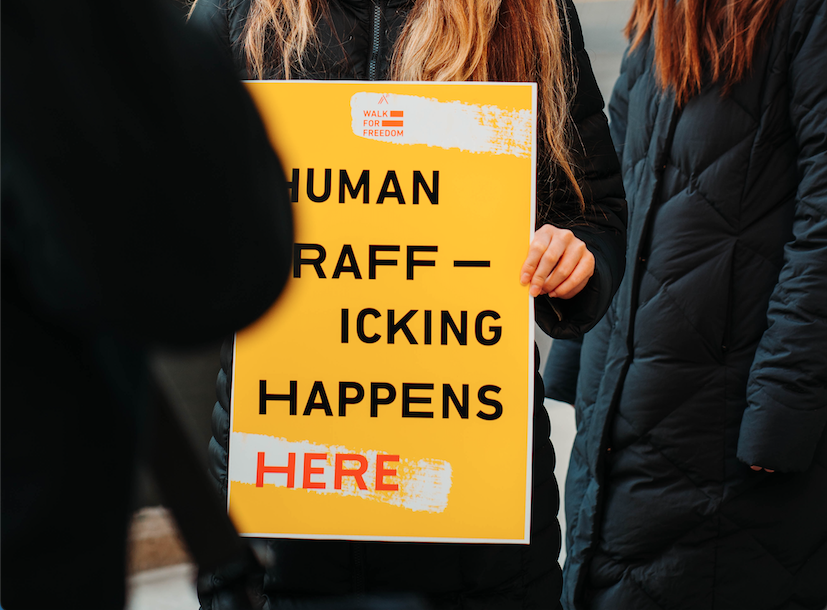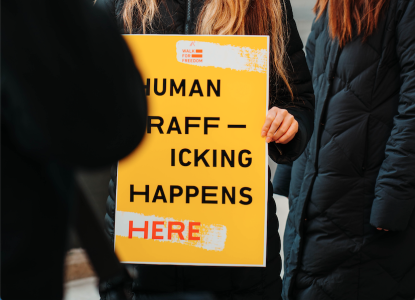By Haidi F. Fajardo, The Church of Jesus Christ of Latter-day Saints
– – –
On July 7, 2023, religious leaders, policy makers, community leaders, and politicians from throughout the Philippines met in Manila to discuss relevant issues in the G20 Interfaith Forum Philippines Regional Meeting. One of the breakout sessions of this meeting centered around Trafficking and Modern Forms of Slavery in the region. The discussion was moderated by Haidi F. Fajardo, Area Communication Director for The Church of Jesus Christ of Latter-day Saints, and launched by Atty. Lara Dominique Sanchez, Attorney III at the Philippines Department of Justice and Mr. Dennis D. Villasenor, Director of the DILG National Barangay Operations Office. This report provides an overview of items discussed during the breakout session.
Introduction
Human trafficking is a grave global issue that demands collective efforts to combat it effectively. In the Philippines, human traffickers often exploit the back-door routes in Mindanao to transport people to Malaysia and other parts of Asia. Additionally, there have been reports of Filipinos mysteriously ending up in other countries despite having incomplete documents, indicating the involvement of corrupt networks, even at the NAIA (Ninoy Aquino International Airport). Notably, after the devastating Haiyan typhoon, Tacloban witnessed a significant number of trafficked women who, in their pursuit of a better life, fell victim to traffickers and became trapped in exploitative situations.
Human trafficking is a deeply entrenched global issue that demands concerted efforts to combat it. Governments and agencies have made significant strides in fighting this crime, implementing measures to identify traffickers and transnational criminals. Forced labor, a pervasive aspect of human trafficking, has gained increasing attention in recent decades. Activists worldwide are urging governments to take decisive action to eradicate forced labor and uphold the rights of vulnerable individuals.
This report provides an overview of items discussed during the breakout session attended by government and faith leaders during the Philippine G20 Interfaith Regional Meeting.

Key Strategies and Approaches
There are several significant approaches in addressing the challenges posed by human trafficking, particularly in relation to forced labor. Here are some of the key strategies that governments and agencies have employed to combat human trafficking:
- Legislative and legal measures: Governments have enacted laws and regulations specifically targeting human trafficking, including provisions that criminalize various forms of exploitation such as forced labor. These laws aim to prosecute traffickers and provide legal protection for victims.
- International cooperation: Collaboration between governments, international organizations, and law enforcement agencies is crucial in addressing human trafficking. Cooperation agreements and information sharing platforms enable joint efforts to identify, investigate, and dismantle transnational trafficking networks. In the Philippines, the IACAT or the Inter-Agency Council Against Trafficking is the body mandated by law to coordinate and monitor the implementation of RA 9208 or the Anti-Trafficking of Persons Act of 2003, with the Department of Justice as the lead agency. The IACAT conducts many different projects toward the elimination of trafficking in persons, prevention of the occurrence of trafficking, the protection and rehabilitation of victims and conviction of trafficking offenders.
- Prevention and public awareness: Raising awareness among the general public, vulnerable communities, and potential victims is vital in preventing human trafficking. Awareness campaigns and educational programs inform people about the risks and tactics used by traffickers, empowering them to recognize and report instances of trafficking.
- Victim identification and support: Improved victim identification mechanisms and support services are essential in assisting survivors of human trafficking. This includes establishing helplines, shelters, and rehabilitation programs that provide medical, psychological, and legal assistance to victims.
- Strengthening labor rights and supply chain transparency: Addressing forced labor requires promoting and enforcing labor rights, particularly in industries prone to exploitation. Governments and organizations work to ensure fair and safe working conditions, monitor supply chains, and enforce regulations that prevent labor exploitation.
- Capacity building and training: Enhancing the capacity of law enforcement agencies, border control officials, and judicial systems is crucial for effective responses to human trafficking. Training programs help equip personnel with the necessary skills and knowledge to identify, investigate, and prosecute traffickers.
- International conventions and protocols: Governments participate in international agreements and protocols, such as the United Nations Convention against Transnational Organized Crime and its Protocol to Prevent, Suppress and Punish Trafficking in Persons, Especially Women and Children. These instruments provide a framework for cooperation and outline standards for combating human trafficking.
- Technology and data-driven approaches: Employing technology, data analysis, and artificial intelligence can enhance the identification of trafficking patterns and assist in tracking down traffickers. Advanced tools and databases enable the sharing of information and collaboration among various stakeholders.
- Targeted sanctions and financial measures: Imposing targeted sanctions, freezing assets, and imposing financial measures on individuals and organizations involved in human trafficking can disrupt their operations and deter potential traffickers.
Gaps to Address
Despite these strengths, there are significant gaps that need to be addressed to enhance the effectiveness of anti-trafficking efforts:
- Inadequate enforcement: Despite the existence of laws and protocols, enforcement remains a challenge in many regions. Insufficient resources, corruption, and weak judicial systems hinder the effective prosecution of traffickers, leading to low conviction rates.
- Limited victim identification: Identifying victims of human trafficking can be challenging, particularly when they are hidden within various industries or in vulnerable populations. Improved training for frontline professionals and increased cooperation between law enforcement and social services are necessary to enhance victim identification.
- Insufficient support services: While victim support services have improved, there is still a lack of comprehensive and specialized assistance for survivors. Adequate funding and resources are needed to provide long-term support, including trauma-informed care, housing, education, and employment opportunities.
- Data and research gaps: There is a need for more comprehensive data collection and research to understand the scope and nature of human trafficking. Improved data sharing and analysis can help identify emerging trends, vulnerable populations, and areas where interventions are most needed.
- Addressing root causes: Many of the underlying factors that contribute to human trafficking, such as poverty, inequality, and conflict, require long-term solutions. Addressing these root causes through poverty reduction, education, and conflict resolution is crucial to effectively combat human trafficking.
- Technological challenges: While technology can aid in combating trafficking, it also presents challenges. Traffickers often exploit digital platforms and encryption methods to facilitate their operations. Efforts are needed to stay ahead of technological advancements and utilize advanced tools for investigation and prevention.
Addressing these gaps requires sustained political will, increased resources, and coordinated efforts among governments, civil society, and international organizations. By continuously improving and adapting strategies, it is possible to strengthen the fight against human trafficking and better support survivors.

Providing a Safe Space for Victims
Religious leaders can play a vital role in creating a safe space for victims of human trafficking to come forward and seek assistance. Here are some ways religious leaders can provide support:
- Raise awareness and education: Religious leaders can educate their communities about the realities of human trafficking, its signs, and the importance of reporting. This awareness can help break the silence surrounding the issue and encourage victims to come forward.
- Provide a non-judgmental and empathetic environment: Religious leaders can cultivate a safe and compassionate space within their religious institutions where victims feel comfortable sharing their experiences. This includes offering a listening ear, demonstrating empathy, and assuring confidentiality.
- Collaborate with local service providers: Religious leaders can establish partnerships with local organizations and service providers specializing in supporting trafficking victims. This collaboration allows religious leaders to connect victims with the appropriate resources and ensure they receive comprehensive assistance.
- Offer counseling and spiritual support: Religious leaders can provide counseling services that address the psychological and emotional needs of trafficking survivors. By incorporating spiritual support into the healing process, they can offer a holistic approach to recovery.
- Advocate for victim protection and justice: Religious leaders can use their influence to advocate for the protection of victims and the prosecution of offenders. This includes raising awareness among policymakers, engaging in public discourse, and supporting legislation that strengthens anti-trafficking efforts.
- Provide shelter and practical assistance: Religious institutions can offer temporary shelter or support the establishment of safe houses for trafficking victims. Additionally, they can assist with practical needs such as food, clothing, and transportation, easing the burdens faced by survivors.
- Facilitate community engagement: Religious leaders can organize community events, workshops, and awareness campaigns on human trafficking. By engaging the wider community, they foster an environment of collective responsibility and support for survivors.
- Training and capacity building: Religious leaders can undergo training on human trafficking, victim identification, and trauma-informed care. This equips them with the knowledge and skills necessary to effectively support victims and collaborate with relevant agencies.
- Foster a culture of inclusion and support: Religious leaders can actively promote a culture of inclusivity, where victims are welcomed, supported, and integrated into the community. By challenging stigmatization and promoting acceptance, they help create an environment where victims feel safe to disclose their experiences.
It is important for religious leaders to approach this issue with sensitivity, respecting the autonomy and choices of survivors. They should also be mindful of cultural and religious factors that may influence a victim’s decision to come forward. By providing a safe space and support, religious leaders can help trafficking victims find the courage to report their experiences and access the assistance they need to heal and rebuild their lives.
Advocacy
Organizations can push for and advocate against forced labor by taking the following actions:
- Research and raise awareness: Organizations can conduct research to understand the prevalence and scope of forced labor, identify industries and regions where it is most prevalent, and document specific cases. This information can be used to raise awareness among the general public, policymakers, and businesses about the issue and its human rights implications.
- Collaborate and form partnerships: Organizations can join forces with other advocacy groups, labor unions, and human rights organizations to amplify their voices and advocate for stronger legal frameworks, policies, and initiatives against forced labor. Collaborative efforts can increase visibility, influence, and impact.
- Lobby for legislative change: Organizations can engage in lobbying efforts to push for the enactment or improvement of laws that specifically address forced labor. This includes advocating for stronger penalties for perpetrators, protections for victims, and regulations that hold businesses accountable for their supply chains.
- Engage with businesses: Organizations can work directly with businesses to promote responsible practices and ethical supply chains. By engaging with companies, organizations can advocate for the implementation of robust due diligence processes, transparency, and traceability measures to identify and address forced labor in their operations and supply chains.
- Support worker empowerment and labor rights: Organizations can advocate for the protection and promotion of workers’ rights, fair wages, safe working conditions, and the right to organize and collectively bargain. By supporting labor rights, organizations can contribute to creating an environment where forced labor is less likely to occur.
- Corporate accountability campaigns: Organizations can launch campaigns targeting specific companies or industries known to have issues with forced labor. There is a need to hold companies accountable and push for meaningful change.
- Empower and support survivors: Organizations can provide direct support and assistance to survivors of forced labor, including access to legal aid, medical care, counseling, and job training. By amplifying the voices of survivors, organizations can empower them to share their experiences and advocate for change.
- Monitor and report violations: Organizations can monitor and document instances of forced labor, human rights abuses, and violations of labor standards. This information can be used to expose offenders, press for accountability, and push for remediation measures.
By engaging in these advocacy efforts, organizations can help raise awareness, promote policy changes, influence business practices, and support initiatives that combat forced labor and protect the rights of workers.
Conclusion
Efforts to combat human trafficking and forced labor have made significant strides, driven by legislative measures, international cooperation, awareness campaigns, and victim support services. Collaborative approaches involving religious leaders, organizations, and interfaith communities have further strengthened the fight against trafficking. However, gaps in enforcement, victim support, data collection, and addressing root causes remain challenges that require sustained attention and resources. By continuing to improve and adapt strategies, governments, organizations, and communities can work together to effectively combat human trafficking and provide comprehensive support to survivors.
The participants of the breakout session have expressed the need to reconvene in order to continue the discussion and generate more detailed suggestions to enhance collaboration and cooperation. They have also requested that the report be distributed to all participants. Furthermore, the Department of Justice and the Department of Interior and Local Government have specifically asked the G20 Interfaith Meeting to provide them with a directory of faith leaders. This will enable the departments to plan and invite these leaders for further collaboration in addressing human trafficking. Additionally, the departments will make available Information, Education, and Communication (IEC) materials that faith leaders can utilize in their advocacy against trafficking. These resources can be incorporated into ecclesiastical communications and sermons, further amplifying the fight against human trafficking.
– – –
Haidi F. Fajardo is the Area Communication Director for The Church of Jesus Christ of Latter-day Saints in the Philippines


